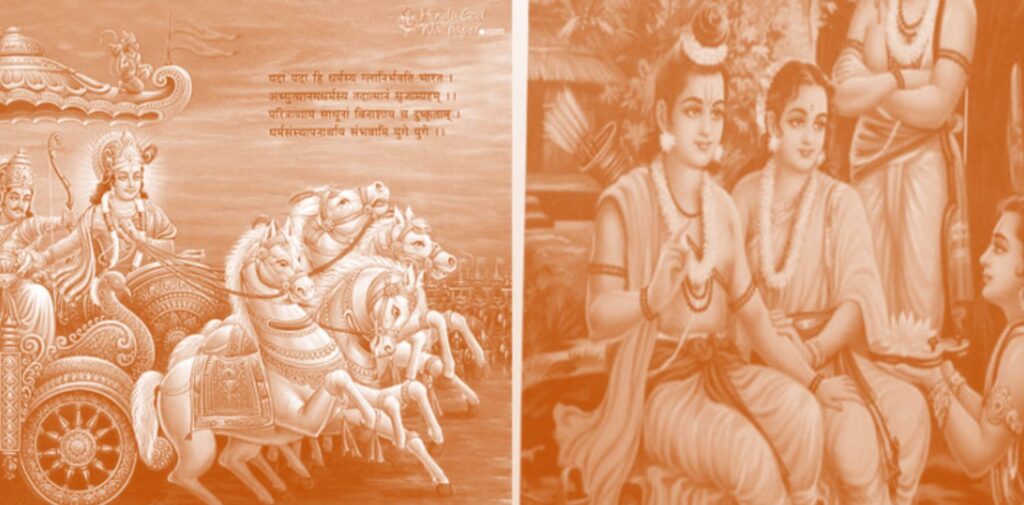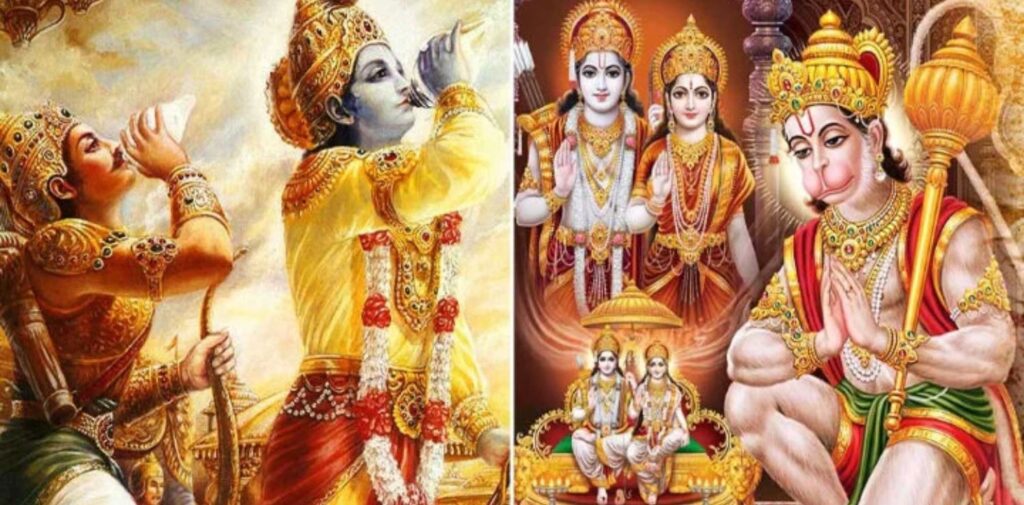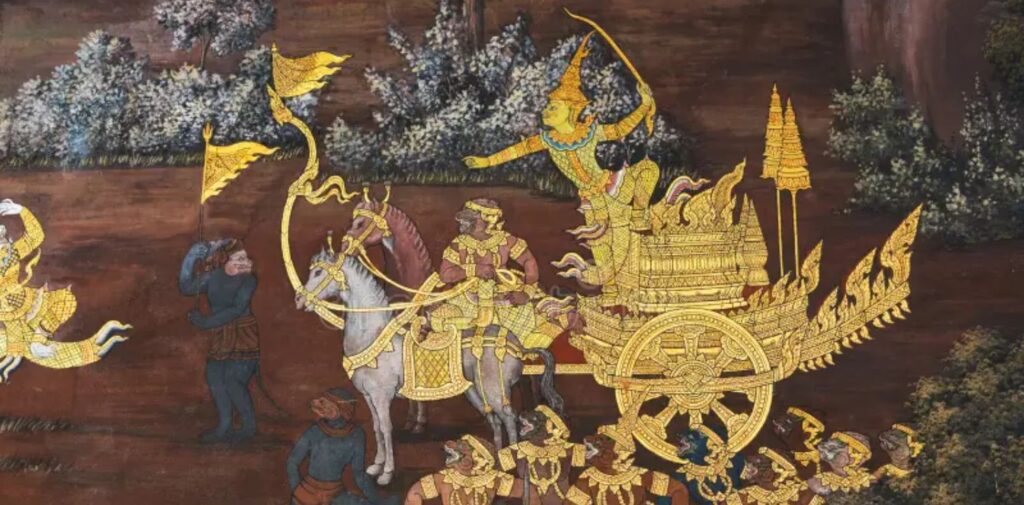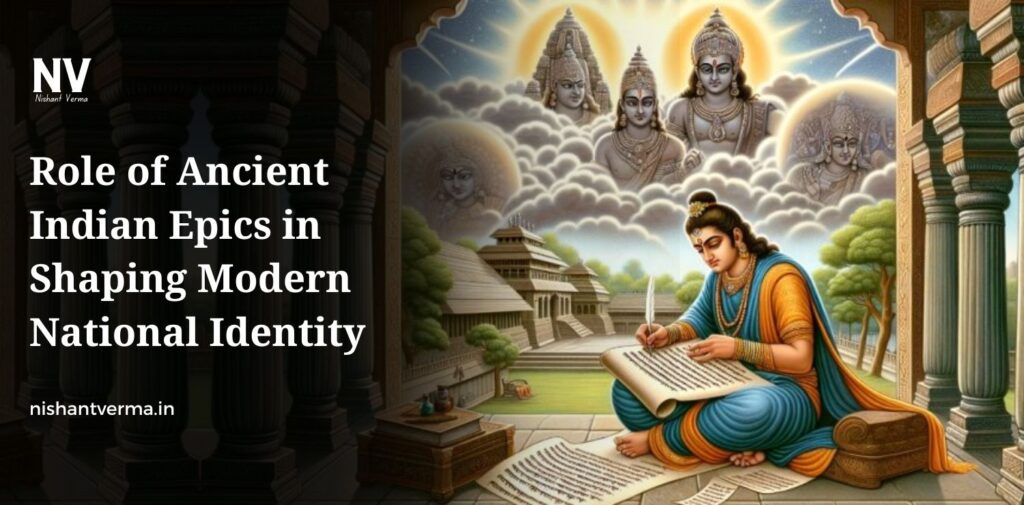India is a country with a rich and diverse history, and much of its cultural foundation is shaped by its ancient texts. Two of the most significant ancient epics that have deeply influenced Indian society, culture, and identity are the Mahabharata and the Ramayana. These epics are not just religious or mythological stories; they are timeless lessons in life, values, morality, and philosophy. They have helped shape the identity of the Indian people, their sense of belonging, and their understanding of the world. Even in modern times, these ancient stories continue to play a crucial role in shaping India’s national identity.
Understanding the Epics: Mahabharata and Ramayana
The Mahabharata and the Ramayana are the two largest and most famous epics in Indian literature. The Mahabharata tells the story of the Kurukshetra War, a great battle between two families, the Pandavas and the Kauravas. This epic is full of lessons on dharma (righteousness), karma (action), and the consequences of our choices. It also emphasizes the importance of duty, honor, and sacrifice. The Ramayana, on the other hand, focuses on the life and struggles of Lord Rama, his wife Sita, his loyal companion Hanuman, and the demon king Ravana. This epic is a story of good versus evil, where Rama’s determination and devotion to dharma lead him to overcome challenges and defeat Ravana.

Influence on Indian Culture and Society
The Mahabharata and the Ramayana have not just been stories; they have shaped the cultural fabric of India. These texts have defined the values and principles that guide the lives of millions of people across the country. The concepts of justice, duty, loyalty, and respect for elders, as depicted in these epics, are deeply ingrained in Indian society. These values are passed down from one generation to the next, continuing to influence the way people think, act, and make decisions.
For instance, the idea of dharma from the Mahabharata encourages individuals to act according to their responsibilities and moral principles. Similarly, the Ramayana emphasizes devotion to family, integrity, and the importance of upholding good over evil. These principles, rooted in ancient texts, continue to guide people in modern times, influencing everything from social norms to personal relationships.
The Epics as National Symbols
The stories of the Ramayana and the Mahabharata are often seen as not just religious or regional narratives, but as national symbols that bind people together. India is a diverse country with many different cultures, languages, and religions, yet these two epics have a unifying effect. The figures of Lord Rama, Lord Krishna, and other characters from these stories are revered across India, regardless of the region or community.
These epics also highlight the unity in diversity that is a core aspect of India’s national identity. The Ramayana and the Mahabharata portray a wide range of characters from different backgrounds, each with their own unique roles in the larger narrative. The stories reflect the importance of working together, despite differences, for a common cause. This idea of unity, despite diversity, is a lesson that resonates deeply in India’s modern national identity.

The Epics as a Source of Inspiration in Politics and Governance
Throughout Indian history, leaders and kings have often turned to these epics for inspiration when it comes to matters of leadership and governance. The values and ideals depicted in the Mahabharata and the Ramayana have been used as examples of ideal leadership. For instance, Lord Rama is often portrayed as the perfect ruler, who governs with fairness, wisdom, and compassion. His ability to maintain moral integrity even in difficult situations is seen as a model for modern political leaders.
Similarly, the figure of Krishna in the Mahabharata, who serves as a guide and charioteer to Arjuna, offers valuable lessons in strategy, diplomacy, and decision-making. Krishna’s teachings in the Bhagavad Gita, a part of the Mahabharata, focus on the importance of duty, action without attachment, and righteousness. These principles have influenced political thought and governance in India, even in contemporary times.
The Epics as a Reflection of India’s Values and Identity
The Mahabharata and the Ramayana are not just stories; they reflect the values that have shaped India’s culture and identity over thousands of years. These epics explore themes such as justice, righteousness, loyalty, duty, and the battle between good and evil, all of which resonate deeply with Indian society today. They provide a moral and ethical framework for individuals to follow, and their teachings continue to be relevant in modern times.
The values promoted in these texts are not just confined to ancient history; they are alive in the way people think and live today. Whether it’s the idea of loyalty to family, as seen in the Ramayana, or the concept of dharma from the Mahabharata, these ideas have helped shape the identity of modern India.
Modern-Day Relevance of the Epics
Even though these epics were written thousands of years ago, their relevance continues to this day. The themes of duty, justice, and the struggle between good and evil are still central to the Indian identity. In today’s world, where society is constantly changing, these timeless stories provide guidance on how to navigate the complexities of life.
The Ramayana and the Mahabharata offer important lessons on leadership, morality, and the responsibilities of individuals and society. These lessons are important not only for understanding India’s past but also for shaping the future of the country. In a world where corruption, inequality, and conflict continue to exist, the teachings of these epics offer a path toward a better society based on justice and moral righteousness.

The Epics and National Unity
One of the key aspects of India’s national identity is the idea of unity in diversity, and the Mahabharata and the Ramayana play a significant role in promoting this concept. These epics, despite their deep roots in regional culture, have transcended regional, linguistic, and religious boundaries. The characters and stories from these texts are recognized and revered across the country, fostering a sense of shared cultural heritage.
Moreover, the ideals of truth, justice, and righteousness as depicted in these epics are universal values that resonate with people from all walks of life. This universal appeal makes the epics a unifying force that contributes to the sense of Indian national identity.
Conclusion: Ancient Indian Epics
The ancient Indian epics Mahabharata and Ramayana are more than just ancient texts. They are an integral part of India’s cultural fabric and have helped shape the country’s national identity over millennia. These stories, rich with moral lessons, themes of righteousness, justice, and unity, continue to inspire and guide people today. The values they embody—such as loyalty, duty, and moral integrity—are as relevant now as they were thousands of years ago.
In modern India, these epics continue to serve as a source of cultural pride, wisdom, and guidance, offering lessons that transcend time and geography. They remind us that the values of the past can play a vital role in shaping the future, and that the strength of India lies in its unity, diversity, and commitment to moral righteousness.
By looking back at these ancient epics, we not only understand the roots of Indian culture and national identity but also gain insights into how these values can guide us toward a more just, fair, and harmonious society.




